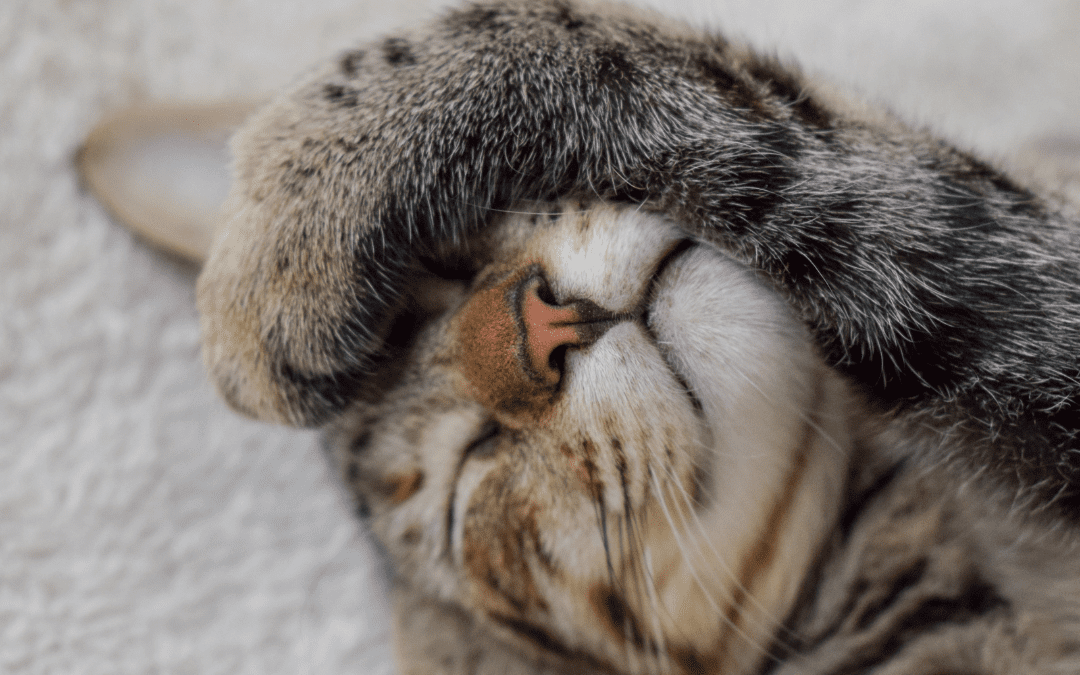Does your cat cough? Cat asthma is one of the most common causes of coughing in cats, affecting between one and five percent of our feline friends. All types of cat can be affected, but some breeds, the Siamese for example, seem to be predisposed.
Cat asthma is caused by a reaction to inhaled allergens, which results in inflammation, constriction of the airways and mucus production. In the short term, this can be distressing for both you and your cat and in the long term may lead to permanent changes to your cat’s airways. Working with your vet in the early stages of the condition to find the cat asthma treatment that works best is key to getting your four-legged friend back to their best.
What are the signs of cat asthma?
A cough which has been present for some time is the most frequently seen sign of cat asthma. Affected cats may also wheeze. Cats will often adopt a characteristic posture when they cough, crouching low to the ground with head and neck extended to straighten the airway. A cough caused by cat asthma is sometimes mistaken for furballs but paying attention to posture will help determine the underlying cause of your cat’s signs.
To confuse matters further, it is important to be aware that not all cats with asthma will cough, and the absence of a cough doesn’t rule out the condition. Difficulty breathing, or an ‘asthma attack’ may be the first sign of a problem in some cats. This is an emergency and you should contact your vet without delay.
What is the best cat asthma treatment plan?
Your vet will work with you to come up with a plan to manage your cat’s asthma. Broadly, this will involve:
- Reducing exposure to inhaled allergens, such as pollen, dust and mould
- Treating episodes of respiratory distress
- Controlling ongoing clinical signs with medication
Medication helps to reduce inflammation and open up constricted airways. If your cat is having difficulty breathing, medication will usually be given by injection. In emergency situations like this, your vet will often give your cat oxygen by facemask too, alongside sedation to reduce stress if needed. After this initial stabilisation, most cats will be transitioned onto either tablets, or a cat inhaler.
How to treat cat asthma
Steroids are one of the main medications used to treat cat asthma. They are often very effective at controlling the signs (or symptoms), but when given systemically (in other words by tablet or injection) the risk of side effects increases. In an emergency situation, the benefits outweigh the risks, but in the longer term inhaled medication is usually the best cat asthma treatment.
After initial stabilisation, your vet may suggest training your cat to use a cat inhaler and then transitioning from tablets to inhaled medication over the course of around two weeks.
What are the advantages of using inhaled medication to treat cat asthma?
Inhalers enable the targeted delivery of medication directly to the lungs and lower airways, with a lower risk of side effects compared to systemic (tablet or injectable) medication.
In humans, metered dose inhalers (MDIs) are used. For optimal medication delivery slow deep breaths, coordinated with device ‘puffs’ are needed. Ever tried this with a cat? As you can imagine, it’s difficult, if not impossible.
To overcome this hurdle, and enable effective delivery of medication, MDIs are combined with a spacer device such as the Aerokat® fitted to a face mask. The Aerokat® provides a hollow tube or chamber into which the MDI is ‘puffed,’ holding the medication suspended until the cat is ready to take a breath.
Training most cats to accept the Aerokat® takes less than a week
For Aerokat® training tips watch our video here.
Which spacer is best for cat asthma treatment?
When it comes to cat asthma treatment, choosing a spacer device that is tailormade for felines, like the Aerokat®, is key. Devices that are designed for human paediatric use have not been built with cat anatomy in mind. As a result, they often deliver less medication to feline lungs, which leads to poorer control of signs and wasted medication.
The Aerokat® delivers up to 193 times more medication to the lower airways than human paediatric devices1
From an anti-static chamber to mask design and a low-resistance valve, the Aerokat® is designed with cats in mind.
- Easy to use… no more tablets
- Mask designed for feline face shapes… reduces leakage
- Low resistance valve keeps medication in the chamber but sensitive enough to open when needed
- Longer holding time means more time for your cat to empty the chamber
You can find out more about the Aerokat® here.

